C.M. Saunders's Blog, page 7
October 1, 2023
Cover Reveal – The Wretched Bones
It’s been a while since I did a cover reveal. I thought I’d better get back in the groove. Not quite an exclusive because the publisher Midnight Machinations Press just beat me to it, but here’s the cover of my forthcoming book. The artwork is by Jeffrey Kosh, who, coincidentally, also designed the cover of Out of Time back in the day. Small world. If you look at both covers, you can clearly see they are both drawn by the same hand.
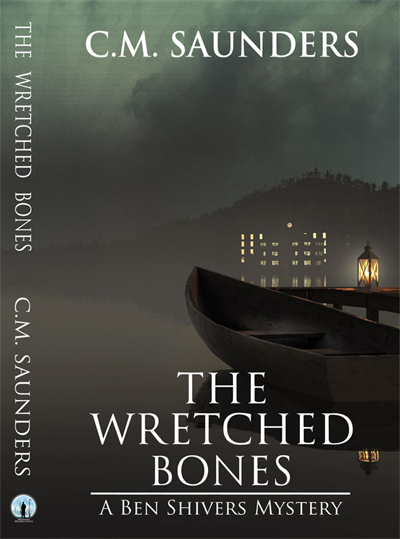
The Wretched Bones is out on October 14th, and available for pre-order now.
September 13, 2023
RetView #74 – Cat People (1942)
Title: Cat People
Year of Release: 1942
Director: Jacques Tourneur
Length: 73 mins
Starring: Simone Simon, Kent Smith, Tom Conway, Jane Randolph, Jack Holt
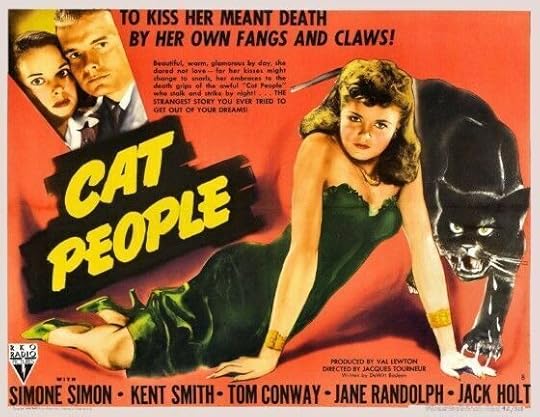
God knows there are enough horror movies about werewolves, vampires and zombies. In my humble opinion, there just aren’t enough films about cats or, for that matter, people descended from an ancient tribes of cat people who metamorphose into panthers when sexually aroused. Enter Cat People. This classic from the war years was produced by a chap called Val Lewton, who had just been named head of the ominous-sounding ‘horror unit’ at RKO studios formed to challenge Universal’s stranglehold on the burgeoning horror film industry. His brief was simple; make horror films. Each one had to come in under a budget or $150,000 and run for under 75 minutes, thereby ensuring they were tailor made for the trend of marketing films as double features. Over the next five years, Lewton would deliver a string of genre-defining classics including I Walked with a Zombie (1943), The Leopard Man (1943) and Boris Karloff’s Isle of the Dead (1945). All these seminal titles stemmed from the unprecedented commercial success of Cat People, which despite being made in just 18 days raked in $4 million (this figure has been disputed) making it RKO’s top moneyspinner of the year. It has since become known as a landmark movie of the era, and in 1993 was selected by the Library of Congress for preservation in the National Film Registry. It led to a sequel, Curse of the Cat People (1944) and a later remake starring Nastassja Kinski and featuring a soundtrack by David Bowie.
The film opens at Central Park Zoo, New York City, where young Serbian-born fashion illustrator Irena Dubrovna (Simon) is drawing a black panther. She catches the eye of marine engineer Oliver Reed (Smith), who strikes up a flirty conversation. Irena invites him to her apartment for tea, where Oliver is intrigued by a statue of a medieval warrior on horseback impaling a large cat with his sword. Irena informs him that the figure is King John of Serbia, and that the cat is a metaphorical depiction representing evil. According to legend, the residents of her home village gradually turned to witchcraft and devil worship after being enslaved by the Mameluks, and when King John drove the Mameluks out and saw what the villagers had become, he had them “put to the sword”. However, “the wisest and the most wicked” escaped into the mountains, the implication being, of course, that Irena’s ancestors were among them. Oliver dismisses these as “fairy tales,” and now deeply infatuated, buys Irena a kitten as a gift. When it hisses at her, she insists on taking it back to the pet shop where all the animals go wild when she enters, which should have been a red flag. Irena gradually reveals that she believes she is descended from the ‘cat people’ of her village, and that will transform into a panther if aroused. Despite that, or maybe because of that, Oliver proposes and the two are married. However, afraid of the consequences, she is reluctant to consummate the marriage, the situation compounded when she tries to touch a bird and inadvertently frightens it to death. Oliver is understanding and patient at first, then as his frustration grows, he persuades Irena to see a psychiatrist (Conway). It’s no use, and Oliver is effectively pushed into the arms of his beautiful assistant, Alice (Randolph). Irena doesn’t like that. She doesn’t like it one bit. Hell hath no fury like a woman descended from an ancient tribe of Serbian cat people who metamorphose into panthers when aroused scorned.
Darkly insidious, Cat People is a masterclass in foreshadowing. At one point Alice shivers, prompting Oliver to ask her if she is cold. She replies, “A cat just walked over my grave.” Simone Simon was cast in the role of Irena by Lewton himself who commented that, “I’d like to have a girl with a little kitten face, cute and soft and cuddly, and seemingly not at all dangerous.” Perhaps as a reaction to RKO’s initial misgivings, the movie was generally panned by critics. Wanda Hale of the New York Daily News said it, “Tries hard to be a melodrama… but it doesn’t try hard enough”, while Bosley Crowther of The New York Times described it as a “Labored and obvious attempt to induce shock.” He (among others) also slated Simon’s acting, stating that actresses who are trying to portray “[feline] temptations – in straight horror pictures, at least – should exercise their digits a bit more freely than does Simone Simon.” Simon herself, along with fellow female lead Jane Randolph, publicly expressed displeasure at her performance.
Nevertheless, in more recent times, Cat People has attained ‘classic’ status. Noted film critic Chris Fujiwara dubbed it “A perfect film,” adding that even its flaws “have become classic,” and dismissing the withering criticisms of other reviewers. He further stated that Cat People, “Is still contagious; the viewer can still share the surprise and pleasure the film evoked in audiences who discovered this unheralded B horror film on its initial release”. He wasn’t alone in his thinking, as in 2006 Roger Ebert included it in his list of Great Movies noting that the film was, “Frightening in an eerie, mysterious way that was hard to define [and had] an undertone of sexual danger that was more ominous because it was never acted upon”.
Trivia Corner:
The suits at RKO were allegedly very dissatisfied with the finished product, suggesting it was too subtle and could not possibly compete with Universal’s more immediate brand of horror that gave us such delights as The Mummy (1932), Bride of Frankenstein (1935), Frankenstein Meets the Wolf Man (1942) and Creature from the Black Lagoon (1954).
September 1, 2023
String in the Bathroom!
I am excited to report that one of my short stories, String, is included in the anthology That Old House: The Bathroom, compiled and edited by the fabulous Angel Herrin from Voices from the Mausoleum. If you’re a horror lover, check out her awesome YouTube channel. Found Footage Fridays are not to be missed.

Anyone who follows my work will know that I have written some pretty gruesome shit in my time. And some weird shit. Sometimes I knock something out that is both gruesome AND weird. But everything else pales in comparison to String, which is essentially about a dude sitting in the bath pulling something out of his arse (come on, we’ve all done it). It’s definitely a horror story, probably edging towards the bizzaro, but there isn’t anything paranormal about it. Instead, it highlights a rare medical condition that makes you sit in the bath and pull stuff out of your ass. No shit. Okay, there’s a little bit of shit, but not much. I’ll be quiet now.
Please buy the book, and go subscribe to Angel’s channel. You won’t be disappointed.
Peace out.
August 13, 2023
RetView #73 – Indestructible Man (1956)
Title: Indestructible Man
Year of Release: 1956
Director: Jack Pollexfen
Length: 72 mins
Starring: Lon Chaney Jr, Max Showalter, Marian Carr, Ross Elliott, Robert Shayne
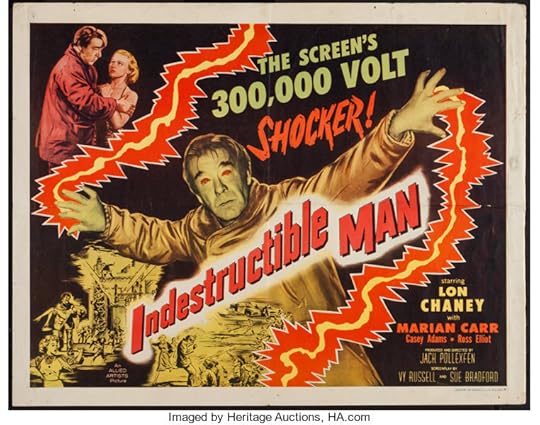
The summary of this one reads like a mash up of Curse of Frankenstein and Shocker. Charles ‘Butcher’ Benton (played by Chaney Jr, by consensus one of the greatest horror movie actors ever) is a convicted murderer and robber betrayed by some acquaintances (and his attorney) who wanted to get their hands on his share of some loot. As a result, he is sent to the gas chamber and his body unlawfully sold to a mad scientist (Shayne). Benton’s lifeless corpse is then zapped with high-voltage electricity and subjected to various experimental chemical injections. His heart is re-stimulated and he is essentially brought back to life. Except now he has been rendered mute because of the electrical damage to his vocal chords, so all he can do is stare menacingly at people. By way of compensation, he is immensely strong and impervious to scalpels, bullets and even, as we find out later, bazooka shells. Hence, the Indestructible Man. Got it so far? Nice.
So, moving on, when Benton ‘comes around’ he is understandably a bit miffed at how things have turned out and swears revenge on all those who have wronged him. And by now, its a pretty extensive list. So first he kills the mad scientist and his assistant, then goes on a murderous rampage to even up the score(s). At one point, one of his would-be victims seeks the help of a friendly barman, busting into his joint saying, “I need help! I just found out Benton has hired a killer to get me.” This was before anyone had twigged it was Benton doing the killing, of course. The ‘friendly’ barman turns out to be anything but sympathetic and says, “Then drink up and get out. I don’t want any trouble in my place.”
The entire movie takes place in Los Angeles over a 72-hour period and is told in the kind of narrative style popularised by TV cop show Dragnet, which keeps the viewer up to speed and is just as well given the fact that the main star has been struck mute. Weirdly enough, that year Chaney Jr starred in another movie in which his character doesn’t speak (The Black Sleep). A very accurate IMDB review (where it currently holds a review score of 4.3/10) says, “Dragnet meets Frankenstein’s monster is the best way I can describe the flavor of this film, which is not nearly as bad as its current low rating would have you believe. In fact, if you like 50’s and 60’s Allied Artist horror on the cheap, I think you’ll like this one. Remember Allied Artists was a poverty row outfit, and they could usually afford just one star. In this case it is Lon Chaney Jr.”
In their contemporary review, the website Basement Rejects gives us the other side of the coin. “For the most part the special effects are pretty awful and the movie appears very cheap. I say for the most part because I think the burn make-up at the end of the film is pretty good. He is supposed to be a character that cannot die but his character can still be maimed. The result is a pretty effective face-melt burn. Indestructible Man isn’t so invincible. It is a rather lame story that seems more like a plot of an episode of The Twilight Zone or The Outer Limits than a feature film (maybe that is why it is only 70 minutes long). The movie isn’t very good and it isn’t very fun…there is a reason it is often a bargain B-Movie.”
The Spinning Image was even more scathing, but no less accurate: “This endearingly rubbish science fiction thriller was scripted by Vy Russell and Sue Bradford. It’s basically a low budget gangster movie with the novelty of featuring an indestructible man as its main villain. There are many moments of lunacy: the map to the stolen money has no landmarks or writing on it, save for a big X, the professor’s assistant apparently drives Chaney’s freshly-executed corpse home in the back of his car; Chaney’s stripper girlfriend eagerly agrees to go out with the lieutenant tracking him down when the detective reveals his first name is “Dick”.
Indestructible Man came as something of a surprise to me. Or a bolt out of the blue, if you’ll excuse the pun. It’s refreshing to come across a fifties B-movie that isn’t about either aliens or radiation. It was distributed on a double-bill with World Without End (1956) and in some areas with Invasion of the Body Snatchers (1956) both of which ARE about aliens. Sort of. Overall, I liked it. Sure, the special effects are questionable. Okay, everything about it is questionable, but it was made in1954 (and held back for two years). That’s a long time ago. So long ago, you can watch the whole thing on YouTube for free.
Do it.
Trivia Corner:
Lon Chaney Jr. reportedly asked director Jack Pollexfen not to make any dialogue changes or additions after the lunch break, because he was a big drinker and would usually be blotto by then.
August 3, 2023
Taking The Old Tip Road to the Horror Library
Remember those public information films where you were forced to watch kids drown, get run over, or be abducted by presumed perverts in a bid to ‘keep us safe?’
In the UK there was one warning us against climbing into discarded fridge freezers, because there’s no handle on the inside and you’d get stuck in there. I don’t recall kids climbing inside discarded fridge freezers being much of a problem, even where I grew up in Wales, but we had a public information film about it anyway. Looking back now, maybe we didn’t. Maybe I dreamt the whole thing. Regardless, the images of a kid trapped inside a fridge freezer at a rubbish tip until he either suffocated or starved to death stuck with me, and years later, a lot of years later, actually, I wrote a story about it.
In an email, the esteemed editor at Dark Moon Books Eric J. Guignard said after he read it, the story stayed with him, which I take as a compliment. It’s very much how I felt about the original concept. It burrowed into my mind and festered there, demanding to be written, though it took a very long time for me to do anything about it.
You can find it in the new anthology The Horror Library Volume 8 on Dark Moon Books, where it sits proudly alongside stories by Bentley Little, Ai Jiang, Steve Rasnic Tem, Eric Nash and more.
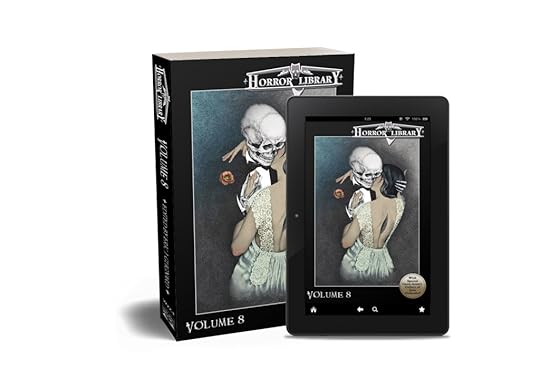
July 23, 2023
Beware, Biter!
My latest story is featured in the new anthology The Shacklebound Book of Drabbles. Well, as the title kind of gives away, it’s actually a drabble. I am lucky enough to have worked with the editor Eric Fomley before, and I am sure he will do this book and its contributors proud just like he does all his other projects. Just check out the cover:
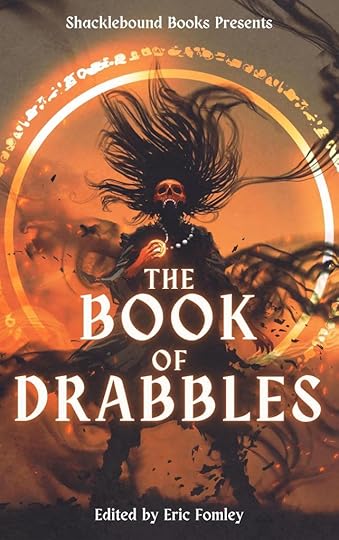
I seem to have fallen in love with drabbles recently. Last year I contributed That Time of Year Again to Meghan’s House of Books, Cat’s Eyes to Heartless: Holiday Horrors, and The Hungry to Drabbledark II which, incidentally, is also available on Shacklebound Books if drabbles are your jam. Come to think of it, The Hungry and Biter could almost be kissing cousins. They are definitely related.
I must warn you, though, Biter is pretty gross. And no, it isn’t about vampires. Or zombies.
The Shacklebound Book of Drabbles is out now.
July 13, 2023
RetView #72 – Carry On Screaming (1962)
Title: Carry On Screaming
Year of Release: 1966
Director: Gerald Thomas
Length: 97 mins
Starring: Harry H. Corbett, Kenneth Williams, Jim Dale, Angela Douglas, Joan Sims, Charles Hawtrey, Bernard Bresslaw, Jon Pertwee
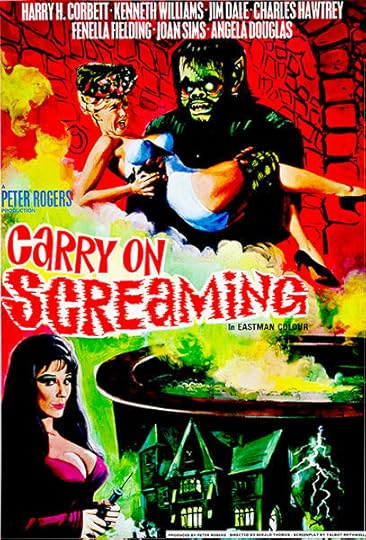
Apparently, not that many people outside Britain have heard of the legendary Carry On films. Quite frankly, this appals me. The films (all 30-plus of them, including such gems as Carry On Teacher, Carry On Behind and Carry On Doctor) are a British institution. Where else are you going to get fart jokes and edgy one-liners about hard-ons and big knockers on terrestrial telly at Sunday tea times? That particular brand of humour perhaps belongs in the past but it was expertly done, not least because almost every gag worked on multiple levels.
This particular outing is a parody of the Hammer Horror films, which were peaking in popularity at the time, and is similar in style and tone to What A Carve Up (1961). It tells the story of a series of mysterious disappearances deep in the English countryside, which ultimately leads police to a mad, electrically-charged Dr. Watt (Williams) in a castle and a monster called Oddbod (Clegg), who are quite obviously based on Dr Frankenstein and his monster. There’s also a butler called Sprockett (Bresslaw) who is a dead ringer for Lurch of the Addam’s Family. Not-very-subtle references are also made to Dr Jeckyll and Mr Hyde. The bumbling coppers are led by DC Slowbotham (Butterworth) who, it turns out, has been investigating the disappearances for yonks. Through a convoluted process of trial and error, he eventually discovers that Dr. Watt and his sister are behind the crimes and have been using Oddbod to abduct people and turn them into mannequins, House of Wax-style, which they sell to the public. During the movie Dr. Watt alludes to the fact that he is Dr Who’s nephew and, coincidendally, John Pertwee (who played Doctor Who from 1970-74) also has a part in Carry on Screaming!
Production of Carry on Screaming ran from 10 January 1966 to 25 February 1966, and it was filmed at Pinewood Studios and on location in Berkshire and Buckinghamshire. It was only the second film in the ‘Carry On’ series to have a theme song with lyrics. The vocal duties were credited as “Anon” and were first thought to have been sung by Jim Dale, who appears in the film. However, the singer is actually Ray Pilgrim, a session musician who worked for the Embassy label. A vinyl 45 rpm version was also released in 1966 (Columbia DB 7972) by Boz Burrell, before he became bassist for King Crimson and Bad Company. According to the website What a Carry On, Charles Hawtrey was added at the eleventh hour, after American distributors specifically requested him, as he was such a crowd-pleaser with audiences there. His character Dan Dann is a play on the popular phrase “Dan, Dan the …(name of trade, e.g. “baker”)… man.” Since he works as the attendant in a public toilet, he always cuts people off when they start saying the phrase.
Carry on Screaming is often seen as one of the best of the Carry On series, with Ian Nathan of Empire magazine pointing out that, “This 12th of the franchise shows that the series could also tackle satire, as well as the tits and bum humour.” On Rotten Tomatoes it has accumulated a Tomatometer score of 71% and an audience score of 72% based on over 2,500 ratings. It was the only instalment in the franchise to ever make it onto Time Out magazine’s list of the top 100 comedy films of all time. Andy Davidson, author of the book “Carry On Confidential,” said, “The Carry On films are the epitome of British film comedy [and] were never better than when they cocked a knowing snook at popular genres of the time. With the Hammer Horror films very much at the height of their popularity in the mid-1960s, it was inevitable that the team would turn their attentions to Bray’s finest before too long.”
With its tongue firmly in cheek, Carry On Screaming still strikes the perfect balance between comedy and horror.
Trivia Corner:
Veteran Sid James is replaced by Harry H. Corbett due to James being committed to appearing as one of the robbers in the pantomime “Babes in the Wood” at the London Palladium, which ran until June 1966. In total, James appeared in 19 Carry On films, receiving top billing in 17 of them. In 1976 he suffered a heart attack and died on stage at Sunderland Empire Theatre at the age of 62.
June 20, 2023
Bruce Springsteen @ Villa Park, Birmingham, 16 June 2023
I’ve seen the Boss a bunch of times before. The first time was at Wembley Arena as a wide-eyed 18-year old, and it’s been one hell of a ride since then. Jobs, friendships, relationships and Prime Ministers have come and gone, and there have been endless ups, downs and roundabouts. It almost feels like Bruce has been beside me every step of the way, not only soundtracking my life but encouraging me, guiding me, cheering from the sidelines and chastising me when I needed it. Whenever I hear Born to Run I am 16 again, and my life is a blank canvass. Trouble River will always remind me of being stuck on a bus in the middle of a torrential flood in New York city circa 1999, and Follow that Dream transports me to a summer’s day at the San Siro in 2003 when I first heard it.
I didn’t spend anything like the couple of grand for a ticket for this gig often touted in the press, but it didn’t come cheap. Add on travel expenses, a night in a city centre hotel during peak season, and a few £7.50 pints, and the cost probably weighs in around the £600 mark. It’s a lot. I could probably have gone on a package holiday anywhere on the continent for less. But having missed the last couple of tours, and then Covid sticking its oar in, I felt this one is important. I hope I’m wrong, but I have a sneaky feeling this might be the last global outing for Bruce and the E Streeters.
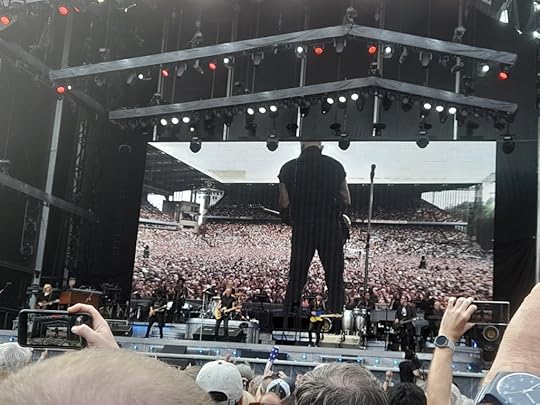
To be brutally honest, I wasn’t expecting much. There are a few reasons for this. For starters, Springsteen and the original E Streeters are all well into their seventies now. You can’t expect the same level of performance they gave in their thirties. Nobody other than Father Time is to blame for that. There’s also the much-derided ticketing drama which left a sour taste in many mouths, and a set-list that has barely changed since the tour kicked off in Tampa back in February. This is unusual for Bruce and, perhaps unfairly, not what fans have come to expect. In fact, some shows have been identical to others, which is almost unheard of in Bruce folklore. One thing I have always admired about the Boss is his inherent ability to be spontaneous and make every show special. If you look back over pre-2023 set lists, you’ll be hard pressed to find any duplicates, especially after the original River tour, something which makes each and every show unique. On recent jaunts, Bruce has taken sign requests from the crowd, some of them pretty obscure, in an attempt to ‘challenge’ the band.
Then there’s the choice of material. The general theme is one of introspection, retrospection and loss. This is exemplified by Bruce’s story, one of the few monologues he indulges in, about being the last surviving member of his first band going into Last Man Standing. Ghosts, a stand-out track from his most recent album ‘Letter to You’ deals with the same subject matter, and while I initially thought the title track was a love song, after seeing it performed live, and Bruce’s constant gesticulations to the crowd, it becomes clear that the song is, in fact, a message to fans:
Things I found out through hard times and good
I wrote ’em all out in ink and blood
Dug deep in my soul and signed my name true
And sent it in my letter to you
But it isn’t all maudlin contemplation. It’s almost as if the show is structured to reflect the five stages of grief; denial, anger, bargaining, depression, and acceptance, with one last stage tacked onto the end for good measure: joy for a life lived well. It makes sense. We don’t realise it so much when we’re young, but as we progress through life, death becomes an ever more prevailing aspect until, inevitably, we all succumb. Most shows on this tour so far have started with a defiant No Surrender, almost certainly a response to the Covid nightmare, and maybe the fragility of life itself, and have included stompers like Bobby Jean, Glory Days, Mary’s Place, Out in the Streets and Backsteets. However, the songs seem to take on a new context in this setting, and the sometimes whimsical lyrics are highlighted. This is never more evident than during a stripped-down My Hometown, which drew one of the biggest cheers of the evening.
Miami Steve Van Zandt said on Twitter recently that though there would be the odd surprise, generally, this time out Bruce had a particular story he wanted to tell, and chose to perform songs that fit the narrative. Despite featuring nothing from a clutch of albums including Greetings from Asbury Park, NJ, Human Touch, Lucky Town, The Ghost of Tom Joad, Magic, Working on a Dream, Devils & Dust, Tunnel of Love, or Western Stars, the songs he does play tonight offer a pretty fair and balanced representation of his life and work.
True to Miami Steve’s word, most nights he manages to shoehorn in a track mid-set that he hasn’t played much (if at all), this swiftly becoming the mechanism by which to make each gig special. At other dates he has busted out I’m on Fire, Brilliant Disguise, Trapped, Jungleland, Pay Me My Money Down, Working on the Highway and a cover of Dirty Water. We got the tour debut of The River. I’ll take that. All things considered, it’s a cracking set-list, and I couldn’t have done better if I’d sat down and written it myself, except perhaps for including Human Touch or Living Proof and substituting Incident on 57th Street for Kitty’s Back, But meh, we all have our whims. Perhaps the greatest advantage of sticking to the same basic set is that each member of the band has the opportunity to nail their parts and polish them to the nth degree.
The thing that will stay with me is the outpouring of joy when Bruce stepped on stage, which was maintained for most of the show. I looked around and everyone in attendance was smiling and hugging it out. It was clear that a large percentage of these people were strangers, or at least had been until today. There were even a few tears. I think that’s part of the Bruce live experience. It’s been a long, bumpy road for a lot of Bruce fans, and there is a kind of solidarity to be found in that. These songs bind us all inexorably together. In the words of local news outlet Birmingham Live: “If you could have somehow harvested the loving energy that the Birmingham crowd were expressing for this troupe, you’d have had enough electricity to illuminate the city skyline for the rest of the year.”

The high-octane set flagged a little in the middle, with an extended Kitty’s Back and The E Street Shuffle either side of his cover of the Commodores’ Nightshift, but I think we all needed a breather by that point. At least this section gave some fringe members of the band, like the backing singers and the E Street Horns, their moment in the spotlight.
Bruce plays with the format from time to time, as is his want, and is not opposed to doing the unexpected, but he is the consummate performer and knows how to work a crowd like nobody else. There were many highlights, but for me, a blistering Prove it all Night stood out and closing out the main set with one-two punch of Badlands and Thunder Road, was a stroke of genius. Both songs are equally anthemic and powerful, and carry the same message of hope and optimism. It’s songs like these, with lyrics about yearning for more from life and looking for a way out of a humdrum existence, that set me on my own path in life. Judging by the crowd reaction, I wasn’t the only one.
After barely time to draw breath, the encores begin with a fired up version of Born in the USA, a song misunderstood for so long which has now become a crucial cornerstone of Springsteen’s repertoire. Even before the last notes of a rollicking Dancing in the Dark have faded out, the big screens either side of the stage start carrying tributes to Clarence Clemons and Danny Federici, two members of the E Street Band not with us any more, to complement a stirring rendition of Clarence’s unofficial theme song Tenth Avenue Freeze Out, another ode to the past. These days saxophone duties are handled by Jake Clemons, Clarence’s nephew, who deserves a special mention. When first inducted into the E Street band in 2012, a year after his uncle’s passing, he had some pretty big shoes to fill. He dropped a few bum notes here and there and lacked the range, presence, and power of an on-form Clarence. There’s no shame in that, the man was a force of nature, and Jake has really blossomed in recent years. Now, his playing is almost indistinguishable from the Big Man’s, and that’s probably the highest compliment you can give him.
The mammoth almost three-hour set closes with a poignant solo acoustic version of I’ll See You in my Dreams, another track from Ghosts. A melancholy, yet fitting way to round things out. Despite ostensibly being about losing someone close, the song provides hope in the line: “For death is not the end, and I’ll see you in my dreams,” reaffirming for the last time the core narrative that one often overlooked consequence of death is a new appreciation of life.

All dodgy photography by me. GO HERE for previous Bruce Blogs.
June 13, 2023
RetView #71 – Hellraiser (1987)
Title: Hellraiser
Year of Release: 1987
Director: Clive Barker
Length: 93 mins
Starring: Andrew Robinson, Claire Higgins, Sean Chapman, Ashley Laurence, Doug Bradley
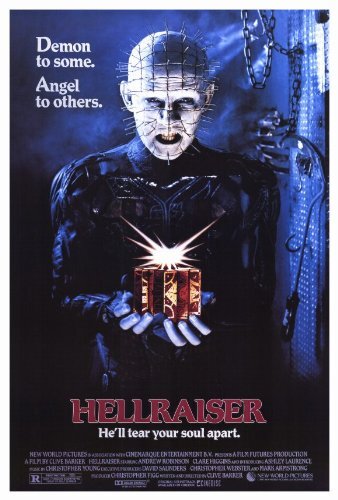
Liverpool-born Clive Barker has always been a bit more cerebral than your average horror writer, which is probably why his work translates to the screen so much more successfully than some of his contemporaries. There’s just a bit more depth and substance, much of which lends itself very well to horror imagery. Though he has written many more works of note which have been turned into movies or TV series, including Rawhead Rex (1986), Nightbreed (1990), and Candyman (1992) this, Barker’s directorial debut, remains his tour de force. It was based on his novella, The Hellbound Heart, which was first published in the 1986 anthology Dark Visions 3. At the time, Barker was riding a wave of popularity on the back of his Books of Blood series, and had recently been dubbed “the future of horror” by none other than Stephen King himself. No pressure there, then. In a scathing retort to this accolade, critic Roger Ebert gave the film half a star when he reviewed it, saying, “This is a movie without wit, style, or reason. I have seen the future of implausible plotting, and his name is Clive Barker.”
A simple, yet fiendishly clever plot begins when hedonist Frank Cotton (Chapman) comes into possession of an antique puzzle box said to be a portal into an extra-dimensional realm of ‘unfathomable pleasure.’ He opens the box and unleashes the bloodthirsty cenobites led by Pinhead (Bradley) who literally rip him to pieces (“No tears, please. It’s a waste of good suffering”). The Cenobites are revealed elsewhere as being members of a religious cult in hell called the Order of the Gash (as names go, that has to be in the top few per cent) who exist solely to explore the further regions of human experience and grant sadomasochistic pleasure to those who call upon them. Okay.
Years later, Frank’s brother Larry (Robinson, best known for his portrayal of the psycho killer in 70’s classic Dirty Harry) and his wife Julia (Higgins), who once had a lusty affair with Frank, move in to the house to try to repair their fractured relationship. Whilst moving in, Larry cuts his hand on a rusty nail. The blood drips down through the floorboards and brings Frank, or what’s left of him, back to life. He needs more blood to become more solid so persuades Julia, who still has the hots for him, to bring home a succession of men who she then viciously murders. Frank’s daughter Kirsty (Laurence), who slowly becomes the star of the show, rumbles them, and then has her own close encounters with both the rejuvinated and perpetual horndog frank and the Cenobites. The whole thing ends with Kirsty escaping and the puzzle box ending up with its original owner, so the cycle can begin again.
Several cuts were made post-production to enable the movie to be down-graded from an X (18) to an R (15) rating in order to reach a wider audience. The sex scenes between Frank and Julia were originally a lot more explicit and included sadomasochistic overtones to further enhance Frank’s decadence. Desire is front and centre in Hellraiser, as Barker later explained, “Sex is a great leveller. It made me want to tell a story about good and evil in which sexuality was the connective tissue. Most English and American horror movies were not sexual, or coquettishly so – a bunch of teenagers having sex and then getting killed. Hellraiser, the story of a man driven to seek the ultimate sensual experience, has a much more twisted sense of sexuality.” He added that, “The MPAA [Motion Picture Association of America] told me I was allowed two consecutive buttock thrusts from Frank but three is deemed obscene!” Nevertheless, it was still banned in Ontario.
Despite the controversy, the reviews were generally positive, especially in the UK. Time Out London called Hellraiser, “Barker’s dazzling debut,” that “Creates such an atmosphere of dread that the astonishing set-pieces simply detonate in a chain reaction of cumulative intensity.” The Daily Telegraph agreed with these sentiments, stating that, “Barker has achieved a fine degree of menace,” while The Daily Mail went one step further and described it as, “A pinnacle of the genre.”
A reboot directed by David Bruckner appeared in 2022 meaning that to date there have now been a total of eleven Hellraiser movies, alongside various comics and spin-offs, making it one of the most enduring franchises in movie history. For the record, the other movies are: Hellbound: Hellraiser II (1988), Hellraiser III: Hell on Earth (1992), Hellraiser: Bloodline (1996), Hellraiser: Inferno (2000), Hellraiser: Hellseeker (2002), Hellraiser: Decader (2005), Hellraiser: Hellworld (2005), Hellraiser: Revelations (2011), Hellraiser: Judgement (2018). Barker himself has had very little to do with any of these, though he has written and released two sequels in The Scarlet Gospels (2015) and Hellraiser: The Toll (2018) but neither have been adapted for the screen (yet).
In an interview with Game Radar, Doug Bradley, who played Pinhead, said the success of Freddy vs. Jason (2003) led Hellraiser distributor Dimension Films to flirt with the idea of a Hellraiser vs. Halloween film. “Clive said he would write it and John Carpenter said he would direct it,” Bradley said. But Moustapha Akkad, who owned the rights to Halloween, vetoed the idea.
Phew.
Trivia Corner:
During filming, Doug Bradley had difficulty seeing through the black contact lenses he wore as Pinhead, and lived in constant fear of tripping over stuff. According to barker the character of Pinhead who quickly became one of the most recognizable and terrifying horror icons ever, was inspired by a hardcore S&M club he visited in New York, where he, “Watched people get pierced for fun.”
June 2, 2023
The Power Hour
As a freelance writer of over twenty years, I’ve produced hundreds of articles and features for a variety of magazines all over the world. And as a staffer on some of the biggest lifestyle magazines in the UK, I’ve produced hundreds more. I never missed a deadline. Not once. That’s a great source of pride for me. Some writers I’ve worked with, especially the younger Millennial-types, missed deadlines on a regular basis. It just wasn’t a big deal to them. Maybe it’s a generational thing but it’s important to understand that on a magazine, the writers are not gods. Sure, we are often the public face of the magazine and get most of the accolades, but in reality, we are very small cogs in very big machines. Writers are given deadlines for a reason. People further up the chain, like the section editor or sub editor, as well as the designers and the picture desk, are relying on you to file your copy on time so they can do their jobs and maintain their own schedule, all to ensure that the magazine goes out on time.
Now, it isn’t always easy to hit your deadlines, especially if you find yourself waiting on other people. Building a feature is rarely a case of just sitting down and writing it. If only. No, nine times out of ten, as your deadline looms ever-closer, you find yourself waiting for some random PR person to send you some information or hook up an interview, or maybe you’ve requested some expert opinion or analysis and the designated expert has been too busy to do what they said they would. Once, I waited all day to carry out a 15-minute phoner with tennis legend John McEnroe, who has something of a fiery reputation to say the least. I had one shot at it, and a deadline, so failure was not an option. When I asked what time my slot was scheduled for, I was told by his manager to just ‘stay by the phone.’ So that’s what I did. I went into the office early and stayed late. I didn’t even leave my desk for lunch. In true prima dona fashion, John McEnroe didn’t call. Well, he did, but instead of calling my office line he called my mobile at about 9pm when I was on the train home. I had to disembark before I lost my connection in a tunnel, and transcribe the entire interview long-hand in a cafe on Waterloo Station. He was lovely, by the way. And I made my deadline.
Sometimes, you can’t even blame other people. Maybe you’ve had a last-minute change of heart and decided to change the structure or approach the article from a different direction, or perhaps the photographer you commissioned is late submitting the images. There are so many variables, you have to be flexible. Stuff move around a lot on magazines. Things happen, and things fall through. At the last moment you might have to cut a feature by 30% to make room for a late advertorial that just came through, or on the other hand you might be asked to double your word count to fill some space after an ad gets dropped.
Anyway, one way to ensure you always hit your deadlines when the pressure is on is to have a daily ‘power hour.’
A power hour is when you eradicate all distractions – disconnect the internet, turn off your phone – and focus entirely on knocking out some words. You don’t stop to edit, you don’t check your email, you don’t cross-check that fact you think you might have just made up, you don’t even get a glass of water. You can do all of that later. For the entirety of that hour you sit at your desk and completely immerse yourself in the task at hand. Everything else, even the important stuff, can wait. It will still be there in an hour.
Pro tip: put on your headphones or ear buds; this is an almost universal way of communicating to everyone around you that you don’t want to be disturbed. You don’t even have to turn on the music.
The power hour is a concept I have carried with me throughout my career, and it’s got me out a lot of tight spots though it helps enormously to do any required reading or research beforehand. You can’t write if you have nothing to write about. In my experience they are generally most effective in the morning, as soon as possible after waking up. That’s when I have more energy and when I am most focused. Next time you have a deadline, or even if you don’t, maybe you should try it. You have nothing to lose and everything to gain.



